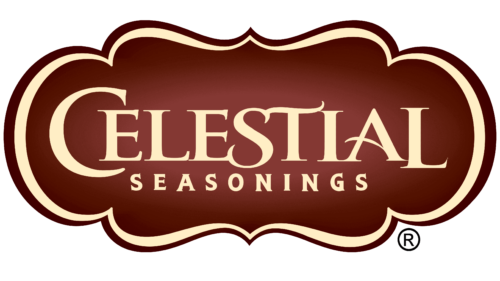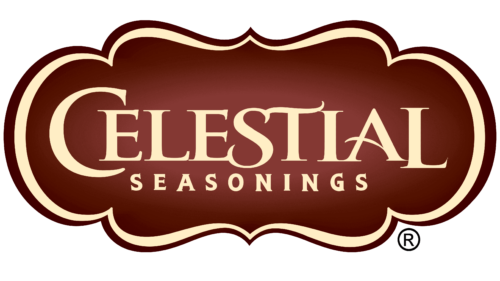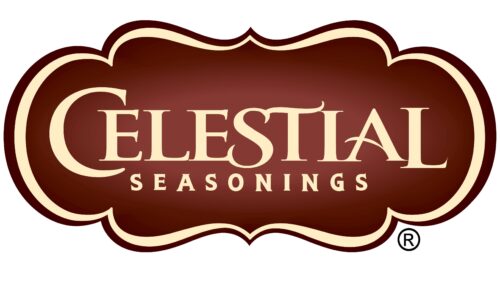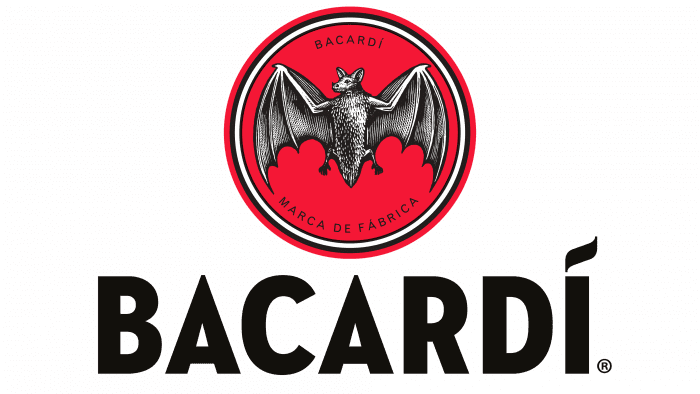The Celestial Seasonings logo reflects the brand’s commitment to natural wellness and its role as a pioneer in the herbal tea industry. Founded in 1969 in Boulder, Colorado, the company began harvesting herbs and flowers from the Rocky Mountains to create rejuvenating teas. The logo highlights their focus on natural ingredients and promoting a healthy lifestyle. Celestial Seasonings has led the way in offering a variety of herbal teas known for their health benefits and great taste. This has made the brand a favorite among tea enthusiasts who seek holistic and comforting brews. The emblem embodies the brand’s connection to nature and its dedication to providing teas that enhance well-being.
Celestial Seasonings: Brand overview
In 1969, Mo Siegel, Peggy Claret, and John Hay started Celestial Seasonings in Boulder, Colorado. They picked wild herbs in the Rockies to make unique teas in a basement. Named after a 19th-century book, the company became known for its herbal teas, such as Sleepytime and Red Zinger, quickly gaining local popularity. Needing more space, it moved to a former roller rink in Boulder in 1972 and introduced innovative stringless tea bags. Through the 1970s, the brand grew, distributing its teas nationwide.
The 1980s saw more growth and new teas under CEO Mo Siegel, including international expansion. Kraft Foods acquired it after going public in 1984, but it was later sold to Hain Celestial.
The brand has pioneered tea innovation and sustainability, introducing new flavors and eco-friendly practices. Today, it offers over 100 tea varieties and is a leader in the U.S. herbal tea market. Celestial Seasonings has evolved from humble beginnings to a global presence, ready to meet the growing demand for healthy, natural drinks.
Meaning and History
What is Celestial Seasonings?
Celestial Seasonings, a pioneer in natural tea production in the United States, was founded to offer pure and wholesome teas. This commitment has led them to provide various tea options, including green, black, herbal, and fruit-infused varieties. The company’s dedication to natural ingredients means their teas contain no artificial flavors or preservatives, catering to health-conscious consumers who prioritize purity in their beverages.
1969 – 2005
From 1969 to 2005, the Celestial Seasonings logo combined art nouveau with natural elements, making it appealing and mysterious. The logo featured a special font that added a magical touch, with the “S” letters styled as large, curved stems with dots, resembling climbing plants or steam rising from a hot drink. This design evoked a feeling of comfort and harmony, enhancing the brand’s image.
The logo’s large letter “C” adds visual softness and warmth, creating a comforting and tranquil impression. This is important for associating the brand with the relaxation of drinking tea.
Initially, the emblem didn’t indicate that the company was related to tea, which added a layer of mystery and piqued curiosity about the brand. The name “Celestial,” suggesting something heavenly or supernatural, didn’t specify the brand’s focus but connected to the unique source of the herbs used in their teas. These herbs were gathered high in the mountains, highlighting the natural purity and quality of the products. The company aimed to provide tea and a cup filled with the essence of wild nature and mountain freshness.
2005 – 2015
In 2005, the Celestial Seasonings logo was redesigned to be more expressive and memorable. It featured a wavy background that suggested soft clouds, adding a feeling of lightness and airiness. This design aimed to evoke a dreamy, fantasy world, particularly emphasizing their famous Sleepytime tea, known for its relaxing qualities and ability to help prepare consumers for sleep.
The logo used shades of brown to create a warm, cozy feeling reminiscent of enjoyable moments spent drinking tea. Brown, linked with earth, stability, and reliability, highlighted their teas’ natural and rich flavors. However, this color could also suggest chocolate, shifting perceptions about the brand’s focus.
A distinct aspect of the new logo was the absence of the word “tea” in any visual text. This choice introduced a sense of mystery and made the brand more universal, but it also risked confusing new customers unfamiliar with Celestial Seasonings’ products and history.
2015 – 2016
In 2015, Celestial Seasonings updated its visual identity to reflect its products’ natural quality better. The new logo features thin brown letters that symbolize the company’s longstanding tradition in tea production. These letters are designed to evoke thoughts of the plants from which the teas are made, emphasizing the natural and organic aspects of the products.
The logo uses capital letters at the start and end of the name to create a unified visual impression. These capitals symbolize nature’s cycles and the care taken in creating each tea, suggesting that each cup of Celestial Seasonings tea is crafted from carefully chosen ingredients that ensure a rich and flavorful experience.
A distinctive feature of the new logo is the star that replaces the dot over the letter “i” in the name. This star represents the brand’s popularity and the high quality of its products, signaling the special place Celestial Seasonings holds in consumers’ hearts and homes. This subtle but meaningful detail underscores the brand’s ability to earn recognition and affection in the market.
2016 – today
In 2016, Celestial Seasonings decided to return to its 2005 emblem after recognizing its visual appeal and effectiveness in branding. This choice was influenced by a detailed analysis of consumer responses and the logo’s effect on how products were perceived in stores. The 2005 emblem had a unique charm and was highly recognizable, which made the company’s products more appealing to customers.
Font and Colors
The logo of Celestial Seasonings elegantly combines two fonts to create a sophisticated and accessible brand image. The word “Celestial” is written in a serif font reminiscent of Trajan Pro Bold but with extended curves that soften and give it character, suggesting the brand’s appreciation for tradition and quality.
Beneath it, “Seasonings” is written in a simpler, cleaner serif font similar to S&S Amberosa Serif. This contrast blends classic and modern styles, reflecting the brand’s commitment to timeless values and contemporary clarity.
The logo’s significant font size ensures visibility and impact, with serif styling and subtle embellishments conveying a sense of refinement and craftsmanship. Using typography enhances brand recognition by combining classic elegance with modern simplicity.
The logo’s color palette, featuring cream and brown, resonates with tea’s natural and soothing qualities. The cream color speaks to purity and lightness, while the brown background conveys warmth, reliability, and an earthy connection. These colors strengthen the brand’s position as a provider of high-quality, soothing, and flavorful teas.
The Celestial Seasonings logo’s font styles and color choices create a memorable and distinct brand identity. The design embodies the brand’s promise to deliver delightful sensations with each cup of tea.
FAQ
What happened to Celestial Seasonings?
Since 2000, Celestial Seasonings has undergone major changes, starting with merging with the Hain Food Group to become the Hain Celestial Group. This move combined Celestial Seasonings’ expertise in herbal teas with Hain’s focus on natural foods, extending their influence in the market for health-conscious consumers.
That same year, the company introduced a chai tea line, diversifying its offerings and tapping into the American market’s growing interest in international flavors. In 2002, Mo Siegel, one of the founders, retired, closing a significant chapter in the company’s history.
2003 brought more innovation with the launch of cool brew iced teas and rooibos tea lines, making iced tea easier to enjoy and introducing teas known for their health benefits.
These steps highlight Celestial Seasonings’ dedication to growth and innovation, showing that even within a larger company, it has stayed true to its goal of delivering high-quality, natural, and tasty teas to its customers.
Why is it called Celestial Seasonings?
The name “Celestial Seasonings” comes from Lucinda Ziesing, a co-founder who was nicknamed Celestial. This name reflects the brand’s goal to make herbal teas that bring peace and wellness. Mo Siegel and his friends, the founders, were an unconventional bunch. They went to their local bank in jeans, smelling like herbs, with Tupperware of Mo’s tea blends, including Sleepytime tea, to get a loan for their new business. The name “Celestial Seasonings” was chosen to highlight the heavenly experience of drinking their teas, focusing on natural ingredients and the comfort of enjoying a good cup of tea. This name helped shape the brand’s identity around health, natural ingredients, and the pleasure of tea.
How big are Celestial Seasonings?
Celestial Seasonings, a key player in the tea market, makes more than 1.6 billion cups yearly. This number shows how popular the brand is worldwide and how successful it is in appealing to tea lovers. The company has expanded its product line from herbal teas to green, black, wellness, and Cold Brew iced teas. This variety meets the different tastes of its customers.
The brand’s teas stand out because of their quality and the range of over 100 ingredients sourced from more than 35 countries. This strategy of getting the best ingredients worldwide makes Celestial Seasonings teas unique and high-quality. The brand’s broad selection of teas and global reach highlight its significant role in the tea industry worldwide.
What company owns Celestial Seasonings?
The Hain Celestial Group, Inc., a global company famous for its natural and organic food and personal-care products, owns Celestial Seasonings. Founded in 1993 as the Hain Food Group, the company expanded significantly in 2000 by merging with Celestial Seasonings. This merger broadened its range of products and strengthened its market presence in the natural and organic sectors. By combining Hain’s emphasis on natural foods with Celestial Seasonings’ herbal tea expertise, The Hain Celestial Group established itself as a major player in the health and wellness industry, serving health-conscious consumers across the globe.
Who is Celestial Seasonings’ target audience?
Celestial Seasonings targets people in their 20s and 30s, especially women, because of their growing interest in health and wellness, which matches what Celestial Seasonings offers. Besides focusing on the younger crowd, the brand also keeps older tea lovers hooked, those who’ve been fans since the company started in 1969 by Mo Siegel and Wyck Hay. These founders were known for their unique, hippie approach to business. By appealing to both the young and the old, Celestial Seasonings connects different generations of tea drinkers with its wide variety of herbal teas, showing that natural and healthy products can attract a broad audience.
How many employees does Celestial Seasonings have?
Celestial Seasonings is a small manufacturing company based in Boulder, Colorado, with 200 employees. Yet, it makes a big impact, generating $22.0 million in annual revenue. This shows how efficiently the company operates, making a significant mark in the herbal tea market with a relatively small team.








